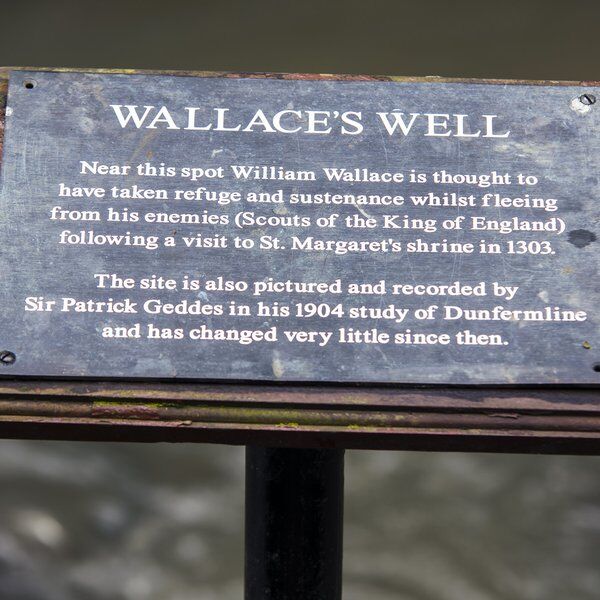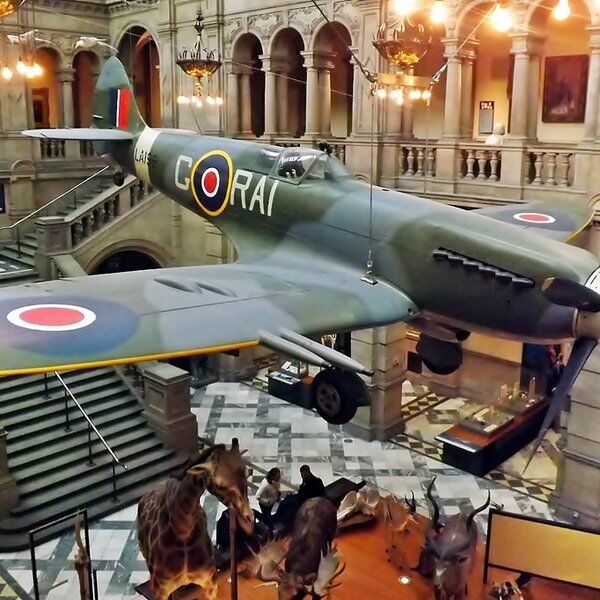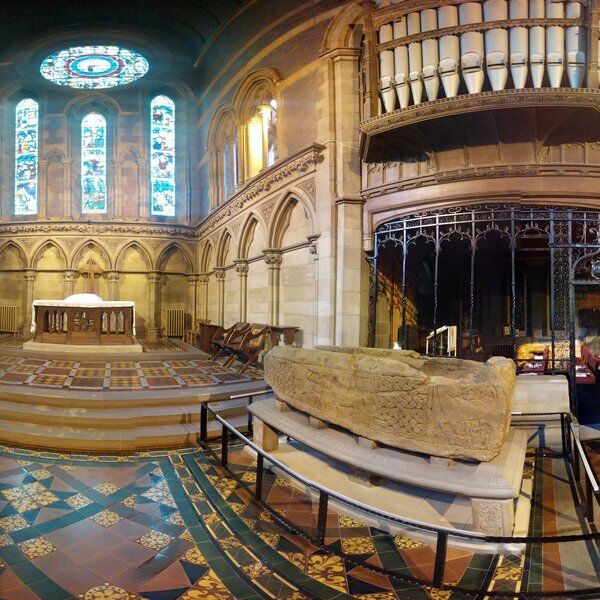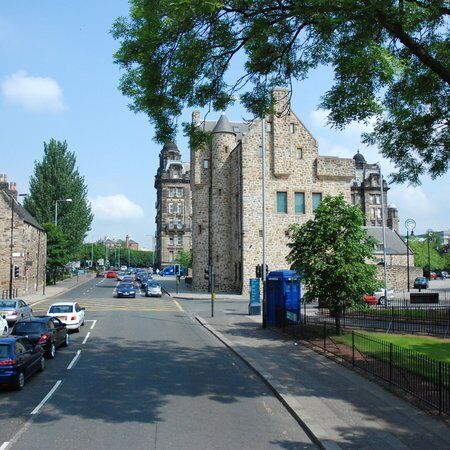
Discovering Glasgow's St. Mungo Museum
The St. Mungo Museum of Religious Life and Art in Glasgow's East End, named in honour of Glasgow's patron saint, houses an extensive collection of artefacts from different times and traditions. Its main focus is to foster understanding and respect among people of different faiths and those of none.

In light of this the museum’s galleries host an array of events catering to a variety of interests, from family-friendly activities to discussions on contemporary religious issues. It has also implemented a range of pioneering initiatives such as Britain's first permanent Zen garden, which creates a safe space for spiritual reflection and genuine interfaith connection.
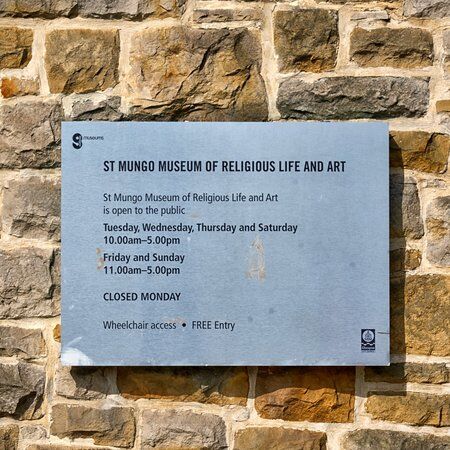
Despite facing the threat of permanent closure due to funding cuts and pandemic-induced financial strains, the museum received a lifeline from Glasgow City Council in March 2020, highlighting its significance to the community.
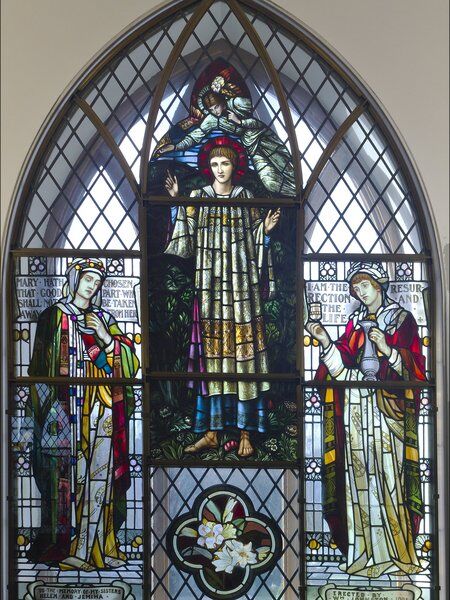
St Mungo the Patron Saint
The museum's namesake, St. Mungo, born in Culross, Fife, in 528 AD, is celebrated for his missionary work along the banks of the River Clyde. Despite facing adversity, including expulsion by the anti-Christian King Morken, St. Mungo continued to spread Christianity, eventually becoming Archbishop of Strathclyde. Today, his legacy endures in Glasgow, where his church formed the heart of the community from which the city later emerged.

Inside St. Mungo Museum
Located in Cathedral Square, on the grounds of Glasgow Cathedral at Castle Street, the St. Mungo Museum highlights Scotland’s religious heritage. Constructed in 1989 on the site of a mediaeval castle-complex, the museum building resembles the Scottish Baronial style of the former Bishop's Castle.

Exploring St Mungo’s Collections
The St. Mungo Museum's galleries include many historical objects including ancient religious texts, ceremonial clothing, sculptures and paintings. Guided tours provide in-depth insights into these collections, while special events featuring guest speakers lead interesting discussions on various religious topics.

Gallery of Religious Art
The museum officially opened its doors in 1993. Today, it is divided into two main floors. The museum's ground floor holds the Gallery of Religious Art, comprising art from a variety of religions. There’s a bronze sculpture of the Hindu god Shiva Nataraja, mediaeval Christian stained-glass panels from the Burrell Collection, and Turkish prayer rugs, and paintings such as 'The Sabbath Candles' by Dora Holzhandler, acquired with the assistance of the Jewish community. At one time the museum even housed Salvador Dalí’s "Christ of Saint John of the Cross."

Each item has been carefully placed to ensure the art can be viewed appropriately, allowing for spiritual engagement. For example, the installation of partitions and plinths, including the elevation of sacred Hindu artefacts like the statue of Lord Shiva, was recommended by the Hindu community.

Gallery of Religious Life
Adjacent to the Gallery of Religious Art, the Gallery of Religious Life provides insights into the practices and traditions of different faiths. Monastic robes, missionary displays, and an Egyptian sarcophagus offer visitors a deeper understanding of the roles and rituals associated with diverse religious communities.

Scottish Gallery
Ascending to the second floor, visitors can learn about the history of religion in Scotland. Focusing on six major religions – Buddhism, Christianity, Hinduism, Islam, Judaism, and Sikhism – the exhibits trace the interfaith dialogue, development, and influence of these factions on the local area.

The Zen Garden
The Zen Garden within the museum's grounds, is a peaceful place, offering visitors a serene retreat in the midst of the busy city centre. Inspired by Buddhist principles of mindfulness and meditation, the garden features carefully arranged large stones, raked sand, and a grassy area creating a harmonious space similar to the beautiful outdoor temple gardens of Kyoto in Japan.

Challenges to the Mission
At its core, St. Mungo Museum is more than just its grand collection of artefacts; it's a platform for interfaith dialogue, exploration, and discovery. By bringing people together from different backgrounds who have different perspectives, the museum aims to elevate people’s understanding.
However, this mission hasn't come without its challenges, as the museum has faced criticism and scrutiny over questions of representation and inclusivity. Issues concerning the exclusion of certain faiths, like the Baha'i, have been raised, prompting discussions about how to address these concerns, including proposals for temporary exhibits.

There was even an incident involving an act of vandalism where a Shiva statue was overturned by a Christian evangelical, highlighting the tensions that can arise when uniting faiths under one roof.
Despite the challenges it has faced, St. Mungo Museum remains committed to its mission of fostering understanding, tolerance, and common ground among diverse religious communities.

Discover More about Glasgow with CityDays
Ready to discover more of what Glasgow has to offer?
CityDays have a brand new treasure and scavenger hunt in Glasgow which combines the fun of an escape room with the historic facts and whimsical trivia of a walking tour!
Take the stress out of planning your visit to Glasgow and book your adventure today!
Not visiting Glasgow this time? Don’t worry, you’ll find us all over the world.

















